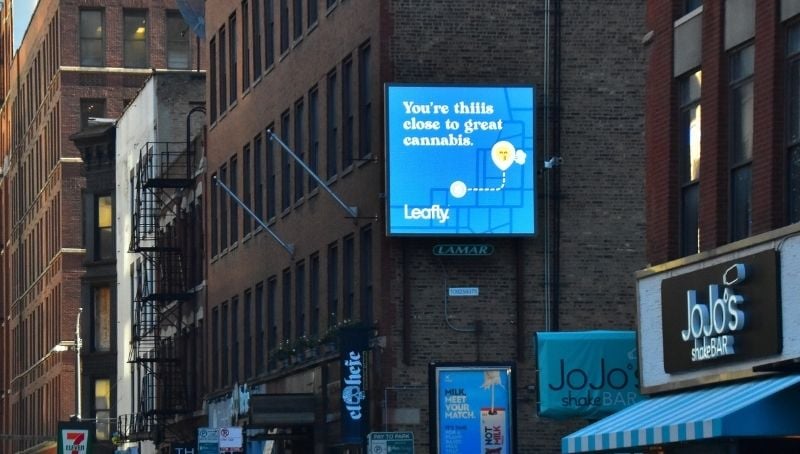Acceleration. That’s the word to describe digital out-of-home advertising as 2022 unfolds. Digital out of home (DOOH) is coming on strong in its own right and as a companion for traditional OOH as marketers look for refreshing ways to reach customers away from home and away from online screen-time.
It makes sense. Technology permeates everything now. Customers expect companies to use imaginative technology to inform and excite them about products and services. DOOH has the power to attract broad-scale, immediate interest for new brands and build sales and loyalty among existing customers.
DOOH works
In the US alone, the number of digital billboards, taxis and place-based ads rose more than 40% in the last four years.
And in a recent nationwide marketing survey, 75% of respondents who buy digital OOH said they are confident in the results. No doubt that is one reason that 92% of those who invest on OOH or DOOH plan to spend more on out-of-home in 2022.
DPAA has projected that DOOH’s share of that spend will rise to 36% this year. To prioritize out-of-home, many marketers are reducing email, paid social and paid search budgets.
DOOH has everything you need to make memorable impressions
The more marketers learn about the benefits of digital OOH, the more inspired they are to put it into play.
- Content creation requires less lead time so campaigns can be executed quickly and modified almost on the fly if needed.
- Broad-based screen locations put content on the right consumption paths, wherever target audiences travel out of home.
- Hyperlocal and contextual targeting increase relevance and timeliness. Geo-targeting allows brands to reach consumers wherever they are, but it also allows ad placements near stores, events, etc. to prompt immediate in-person response.
- 4G screens offer high resolution displays and brighter colors. Digital creative literally lights up content and increases opportunities for active engagement.
More than a third of marketing survey respondents already invest in digital video.
- Programmatic automation is increasingly available. This expands and simplifies creative, purchasing and scheduling options.
With marketers actively searching for alternatives to overly competitive and increasingly expensive online advertising, DOOH offers essentially the same automated purchasing benefits — but with placements that meet audiences wherever they are when they’re out of home.
A quarter of marketing survey respondents already invest in programmatic DOOH.
- Dynamic DOOH allows content to include multiple (and moving) images, video or to change in real time depending on contextual factors such as the weather, time of day, breaking news, sports scores, etc.
And, on the leading edge of interactive DOOH ads? Recognition-enabled displays that change according to the individual viewer, not just the environment.
- DOOH is data-driven, allowing measurement and attribution comparable to other digital channels. That boosts decision-making as well as tracking. Mobile tracking registers proximity to provide data on footfall in the vicinity as well as brand engagement.
This increased ability to measure outcomes benefits both marketers and OOH suppliers.
DOOH and traditional OOH are ideal companions
Marketers use omni-channel campaigns to reach targeted audiences in multiple ways. Adding OOH to the mix significantly increases reach and frequency and lifts overall results. Adding both DOOH and traditional out-of-home provides a comprehensively holistic approach that can hit all the high notes at all the right times to impress and activate audiences.
The two types of out-of-home advertising naturally complement one another. Static ads are ideal for repeat viewing over a long run (typically weeks), whereas digital ads run in rotation with other content for shorter and far more flexible scheduling. Together, they augment one another as well as other advertising channels:
- Marketers have maximum options to tailor advertising to each campaign’s audience and goals
- No opportunities to reach out and engage are overlooked
Shockingly, however, only 13% of marketers are using both digital and traditional OOH. This represents a vast opportunity for brands to step out ahead of competitors — or for marketers to launch a new brand with a sensational, compelling presence.
Consumers are tired of online ads to the point where they are either ignoring or taking overt action to delete or block them. They want brands to show them something fresh — ads that are not only relevant but intriguing. DOOH has what it takes to capture attention, captivate audiences and accelerate advertising success in 2022 and beyond.
